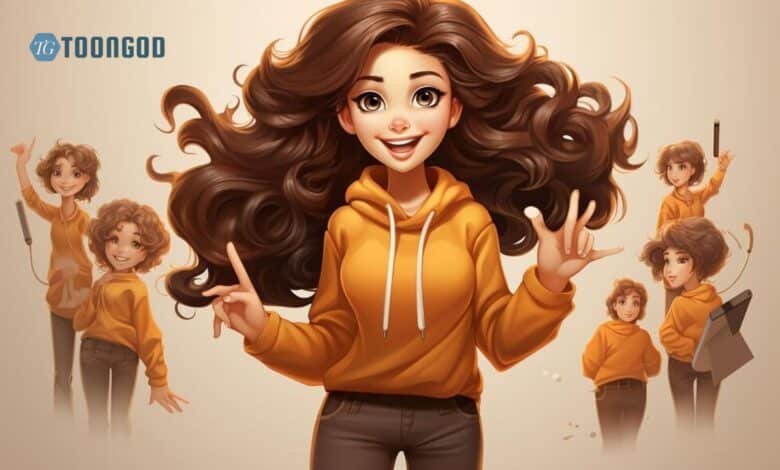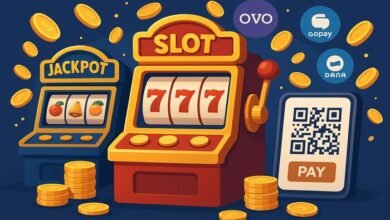Juvenile the Animation – The World of Youthful Animation 2024

Juvenile the Animation: In today’s digital age, animation has become an integral part of storytelling, particularly for younger audiences. One captivating genre that stands out is juvenile the animation, which focuses on themes, characters, and narratives that resonate with children and adolescents. At Toongod, we recognize the importance of creating engaging and entertaining animated content that not only captivates young viewers but also ignites their imagination and fosters their development. In this extensive exploration, we will delve into various facets of juvenile animation, examining its significance, popular trends, production techniques, and the profound impact it has on its audience.
Understanding Juvenile the Animation
Juvenile the Animation refers to animated content specifically designed for a younger demographic. This genre encompasses a broad range of styles, techniques, and narratives that appeal to children and adolescents. Juvenile animations often feature vibrant colors, whimsical characters, and relatable storylines that reflect the experiences and emotions of young viewers.
The Evolution of Juvenile the Animation
The history of Juvenile the Animation dates back to the early 20th century. Iconic characters like Mickey Mouse and Bugs Bunny captured the hearts of children and adults alike, laying the foundation for animated storytelling. Over the decades, the genre has evolved significantly, adapting to changes in technology, audience preferences, and societal values.
The 1990s saw the rise of animated television shows such as Rugrats and Arthur, which introduced more complex characters and storylines. These shows not only entertained but also addressed important social issues, setting the stage for a new wave of juvenile animation. Today, we see a diverse range of animated content, from traditional hand-drawn styles to cutting-edge 3D animation, catering to various age groups and cultural backgrounds.
The Significance of Juvenile the Animation
- Cognitive Development: Animation plays a crucial role in the cognitive development of children. It stimulates creativity, enhances problem-solving skills, and improves language abilities. Through engaging visuals and narratives, juvenile animation helps children understand complex concepts in a fun and entertaining way.
- Emotional Connection: Characters in juvenile animations often mirror the challenges and emotions that children face in their daily lives. This connection allows young viewers to relate to the stories being told, fostering empathy and emotional intelligence. For instance, a character dealing with friendship issues can help children understand their own social dynamics.
- Cultural Education: Animated shows often incorporate cultural themes, folklore, and values that help children understand and appreciate diversity. This exposure to different cultures through juvenile animation can promote inclusivity and understanding among young audiences.
- Entertainment: Beyond education, juvenile animation serves as a source of entertainment. It captures the imagination of children, providing them with a safe and enjoyable escape from reality. This entertainment aspect is crucial for children, allowing them to unwind and explore new worlds.
- Life Skills Development: Many Juvenile the Animation include elements that teach essential life skills, such as teamwork, resilience, and responsibility. By showcasing characters navigating challenges, these shows help children learn valuable lessons about collaboration and perseverance.
Popular Trends in Juvenile the Animation
1. Diverse Characters and Storylines
One of the most significant trends in Juvenile the Animation is the push for diverse characters and storylines. This shift reflects a growing awareness of representation in media, ensuring that children from various backgrounds can see themselves in the characters they watch. Shows featuring diverse protagonists are becoming increasingly popular, as they resonate with a broader audience and promote acceptance.
Diversity in juvenile animation encompasses not only racial and ethnic representation but also characters with different abilities, gender identities, and family structures. This inclusion fosters a sense of belonging among young viewers, allowing them to relate to the characters’ experiences.
2. Educational Content
With the rise of educational programming, many juvenile animations are designed to teach children essential skills. From language development to math concepts, animated shows often incorporate learning elements within entertaining narratives. This blending of education and entertainment makes it easier for children to absorb new information while enjoying their favorite shows.
For instance, series like Sesame Street have successfully integrated educational content into their stories, teaching children foundational skills through music, humor, and relatable characters. Such educational animations provide a solid platform for lifelong learning.
3. Environmental Awareness
As the world faces pressing environmental issues, many juvenile animations are addressing these topics through engaging stories. Shows that teach children about sustainability, conservation, and the importance of taking care of our planet are gaining popularity. By instilling these values at a young age, Juvenile the Animation can play a vital role in fostering environmentally conscious future generations.
Animations like The Lorax and Octonauts encourage young viewers to appreciate nature and understand the importance of protecting it. This environmental messaging not only entertains but also inspires children to take action in their own lives.
4. Interactive Animation
The rise of digital platforms has led to the emergence of interactive animation. Children can engage with animated content in new ways, such as participating in story decisions or solving puzzles alongside their favorite characters. This interactivity enhances the viewing experience and promotes active learning.
Interactive animations often utilize apps and games that complement traditional animated shows, allowing children to dive deeper into the story. By engaging in interactive experiences, young viewers develop critical thinking and problem-solving skills.
5. Short-Form Content
With the increasing popularity of streaming platforms and social media, short-form content has gained traction in Juvenile the Animation. Bite-sized episodes or clips are designed for quick consumption, catering to shorter attention spans and busy lifestyles.
Platforms like YouTube and TikTok have become hotbeds for short animated content, where creators can share engaging stories in just a few minutes. This trend not only reflects changing viewing habits but also opens up new avenues for creativity.
Techniques in Creating Juvenile Animation
Creating captivating Juvenile the Animation requires a blend of creativity, technical skills, and an understanding of the target audience. Here are some key techniques used in the production of juvenile animations:

1. Character Design
The design of characters in Juvenile the Animation is crucial for capturing the attention of young viewers. Characters are often designed with exaggerated features, bright colors, and expressive facial expressions to make them relatable and memorable.
Character design often involves collaboration between artists, writers, and psychologists to ensure that the characters resonate with the intended audience. A well-designed character can become an icon in children’s media, influencing generations of young viewers.
2. Storyboarding
Storyboarding is an essential step in the animation process. It involves creating a visual outline of the entire animated sequence, allowing animators to visualize the flow of the story and plan out scenes effectively. A well-structured storyboard helps ensure that the narrative remains engaging and coherent.
During the storyboarding phase, creators consider pacing, timing, and emotional beats, ensuring that the story captures and maintains the audience’s interest.
3. Voice Acting
Voice acting plays a significant role in bringing animated characters to life. The right voice can add depth and personality to characters, making them more relatable to young audiences. Skilled voice actors often use a range of tones and emotions to convey the character’s feelings and intentions.
The casting process for voice actors is critical, as the chosen voices must align with the characters’ designs and personalities. Iconic voice performances can elevate an animated series, creating memorable characters that resonate with viewers.
4. Animation Techniques
There are various animation techniques used in Juvenile the Animation, including traditional hand-drawn animation, 2D digital animation, and 3D animation. Each technique has its own unique characteristics and can be employed to achieve different visual styles. The choice of technique often depends on the target audience and the story being told.
- Traditional Animation: Hand-drawn animation has a timeless quality and allows for a unique artistic style. However, it can be labor-intensive and time-consuming.
- 2D Digital Animation: Digital tools have revolutionized 2D animation, making it more accessible and efficient. This technique combines the charm of traditional animation with the convenience of digital technology.
- 3D Animation: 3D animation has gained popularity due to its ability to create lifelike characters and immersive environments. This technique is commonly used in feature films and high-quality television shows.
5. Music and Sound Design
Music and sound design are vital components of juvenile animation. A well-crafted score enhances the emotional impact of a scene, while sound effects bring the animation to life. The choice of music often reflects the tone of the story, whether it’s whimsical, adventurous, or heartwarming.
Many successful animated shows have catchy theme songs that become instantly recognizable. These musical elements not only enhance the viewing experience but also contribute to the show’s overall branding.
The Impact of Juvenile Animation
The influence of Juvenile the Animation extends far beyond entertainment. Here are some ways it impacts young viewers:
1. Social Skills Development
Juvenile the Animation often depict social interactions and relationships, allowing children to learn valuable social skills. By observing characters navigating friendships, conflicts, and emotions, young viewers gain insights into their own social environments.
Shows like Peppa Pig or Paw Patrol illustrate teamwork, sharing, and communication, helping children understand the dynamics of relationships and the importance of cooperation.
2. Moral Lessons
Many juvenile animations convey moral lessons and values through their narratives. Themes of kindness, honesty, and perseverance are often explored, helping children understand the importance of ethical behavior in their lives.
For example, My Little Pony emphasizes friendship and loyalty, teaching children the value of supportive relationships. These moral lessons resonate with young viewers, influencing their behavior and decision-making.
3. Inspiration and Aspiration
Animated stories featuring adventurous characters can inspire children to explore their creativity and imagination. These narratives encourage young viewers to pursue their dreams and aspire to be their best selves.
Shows that depict characters overcoming challenges, such as Tangled: The Series, motivate children to believe in their abilities and strive for success.
4. Understanding Emotions
Juvenile the Animation often addresses complex emotions, helping children navigate their feelings. Characters who experience sadness, frustration, or joy provide relatable examples for young viewers, aiding in emotional regulation.
Through the lens of animation, children can learn to express their feelings constructively and understand the emotions of others, fostering empathy.
5. Fostering Creativity
The whimsical nature of Juvenile the Animation sparks creativity in children. By immersing themselves in fantastical worlds and imaginative scenarios, young viewers are encouraged to think outside the box and explore their creativity.
Many animated shows incorporate artistic elements, such as music, storytelling, and visual design, inspiring children to engage in creative activities themselves.
The Future of Juvenile Animation
As we look toward the future, the landscape of juvenile animation is set to evolve further. Technological advancements, changing societal values, and shifting audience preferences will continue to shape the genre. Here are some trends that may define the future of juvenile animation:
1. Augmented Reality (AR) and Virtual Reality (VR)
The integration of AR and VR technologies into juvenile animation presents exciting opportunities for immersive storytelling. These technologies can create interactive experiences, allowing children to engage with characters and stories in new and dynamic ways.
Imagine a world where children can step into their favorite animated series, interacting with characters and participating in adventures. This level of engagement could revolutionize the way children experience animated content.
2. Global Collaborations
The animation industry is becoming increasingly globalized, with collaborations between creators from different countries. This cross-cultural exchange allows for diverse storytelling and representation, enriching the content available to young audiences.
Collaborative projects can introduce children to different cultures and perspectives, fostering a global mindset from a young age.
3. Focus on Mental Health
As mental health awareness grows, Juvenile the Animation is likely to address topics related to emotional well-being more prominently. Animations that explore themes of anxiety, friendship, and resilience can provide valuable support for children navigating their feelings.
Shows that tackling mental health issues in age-appropriate ways can equip children with coping strategies and foster open discussions about emotions.
4. Sustainability in Animation
The animation industry is becoming more conscious of its environmental impact. As sustainability becomes a priority, we may see a rise in animations that promote eco-friendly practices and awareness.
By incorporating messages about sustainability into stories, creators can inspire young viewers to become advocates for the environment.
5. Evolving Storytelling Techniques
As storytelling methods continue to evolve, so will the narratives within juvenile animation. New techniques, such as nonlinear storytelling or interactive narratives, may offer fresh ways to engage young audiences.
These innovative approaches can create unique viewing experiences, encouraging children to think critically and participate actively in the storytelling process.
Conclusion
“Juvenile the animation” is a dynamic and evolving genre that plays a significant role in shaping the experiences of young audiences. Through engaging characters, captivating stories, and valuable life lessons, Juvenile the Animation not only entertains but also educates and inspires. At Toongod, we are committed to creating high-quality animated content that resonates with children in India and the US, fostering a love for storytelling and creativity.
If you’re interested in learning more about our animation projects or want to collaborate with us, feel free to reach out through our Contact Us page. To discover more about our vision and mission, visit our About Us page.
For those looking to dive deeper into the intricacies of animation character development, check out our detailed post on Animation Character.
In a world where screens dominate the landscape, Juvenile the Animation remains a powerful tool for connection, education, and inspiration. As we look to the future, the possibilities for this genre are endless, and we at Toongod are excited to be part of this vibrant journey.





